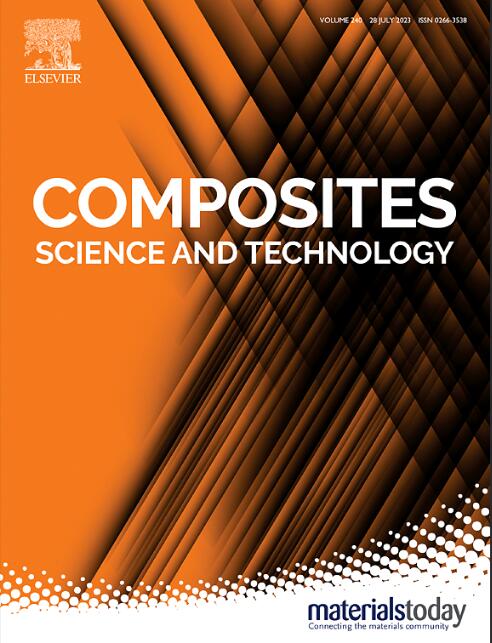Water-resistant, tough, and moldable corn stover-based structural materials through multiple dynamic cross-linking networks in-situ thermal rearrangement strategy
IF 9.8
1区 材料科学
Q1 MATERIALS SCIENCE, COMPOSITES
引用次数: 0
Abstract
Renewable and biodegradable materials derived from biomass have emerged as promising alternatives to non-biodegradable petroleum-based plastics. However, most biomass-based materials have difficulties meeting the standards required for practical applications regarding water resistance and mechanical properties. Herein, a scalable and efficient bottom-up approach is developed to transform low-value-added corn stover into a tough, moldable, and water-resistant structural material (CSS + CAFe) via a combination of multiple dynamic cross-linking networks' construction and the thermal rearrangement technique. Through the rearrangement of dynamic bonds, including coordination bonds, hydrogen bonds, and ester bonds during hot pressing, the corn stover fibers achieve interface reconfiguration and strong interlayer bonding, resulting in an enhanced water resistance capability (a 41.55% decrease in water absorption and a 154.7% increase in wet strength). The as-prepared CSS + CAFe composite materials deliver superior moldability, which enables them to be processed into tableware. Furthermore, this multiple dynamic cross-linking networks in-situ thermal rearrangement strategy involves only green chemicals, and life cycle assessment (LCA) shows that its production process is more environmentally friendly compared to polypropylene (PP) and low-density polyethylene (LDPE). As such, this work provides a promising approach to producing biodegradable and sustainable structural materials, which are expected to serve as alternatives to petrochemical plastics.

耐水、坚韧、可塑的玉米秸秆基结构材料通过多个动态交联网络原位热重排策略
来自生物质的可再生和可生物降解材料已成为不可生物降解的石油基塑料的有希望的替代品。然而,大多数生物质基材料在耐水性和机械性能方面难以满足实际应用所需的标准。本文开发了一种可扩展且高效的自下而上方法,通过多个动态交联网络的构建和热重排技术的结合,将低附加值的玉米秸秆转化为坚韧、可塑和防水的结构材料(CSS + CAFe)。玉米秸秆纤维在热压过程中通过配位键、氢键、酯键等动态键的重排,实现界面重构,层间键合强,抗水性能增强(吸水率降低41.55%,湿强度提高154.7%)。预制的CSS + CAFe复合材料具有优异的可塑性,使其能够加工成餐具。此外,这种多动态交联网络原位热重排策略只涉及绿色化学品,生命周期评估(LCA)表明,与聚丙烯(PP)和低密度聚乙烯(LDPE)相比,它的生产过程更环保。因此,这项工作为生产可生物降解和可持续的结构材料提供了一种有前途的方法,有望作为石化塑料的替代品。
本文章由计算机程序翻译,如有差异,请以英文原文为准。
求助全文
约1分钟内获得全文
求助全文
来源期刊

Composites Science and Technology
工程技术-材料科学:复合
CiteScore
16.20
自引率
9.90%
发文量
611
审稿时长
33 days
期刊介绍:
Composites Science and Technology publishes refereed original articles on the fundamental and applied science of engineering composites. The focus of this journal is on polymeric matrix composites with reinforcements/fillers ranging from nano- to macro-scale. CSTE encourages manuscripts reporting unique, innovative contributions to the physics, chemistry, materials science and applied mechanics aspects of advanced composites.
Besides traditional fiber reinforced composites, novel composites with significant potential for engineering applications are encouraged.
 求助内容:
求助内容: 应助结果提醒方式:
应助结果提醒方式:


